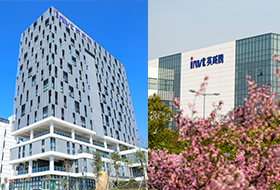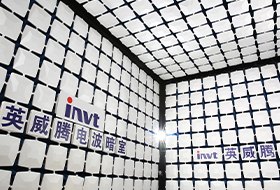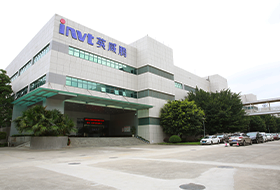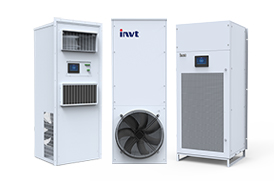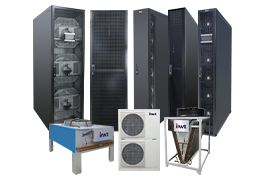How to improve the efficiency and sustainability of traditional data centers
Research shows that the U.S. colocation data center market will usher in a year of rapid growth. User demand for data centers is rising - from the emergence of widespread generative artificial intelligence to the rising wave of digital transformation, more ways to use this data to create value, so more enterprises are investing in data centers.
A recent analysis report found that a new wave of technology trends is driving changes throughout the data center field at an unprecedented rate, with rapidly diversifying business applications generating terabytes of data. All data has to go somewhere to be stored and processed, and as hyperscale cloud providers move some workloads away from large, capex-intensive centralized centers into the secondary and tertiary colocation data center market, the Demand for colocation data centers is likely higher than ever.
However, these conditions pose serious challenges to colocation data center operators, as the resulting massive workloads have overwhelmed traditional data center infrastructure, many of which may not be equipped to handle them.
Now, the colocation data center market finds itself caught between two conflicting macroeconomic forces. On the one hand, increased demand has put greater pressure on data center operators in second-and third-tier markets to build more data center facilities faster to accommodate larger and more complex workloads. On the other hand, the practical need to reduce carbon emissions and drastically cut energy consumption is crucial.
As U.S. government regulators introduce tighter emissions limits and stricter reporting requirements, these states must implement sustainable practices.
Both trends could pose a serious threat to the future success of data center owners and operators, especially those with legacy facilities. All in all, there are serious risks, which highlights why the data center industry must start transforming traditional data centers to improve efficiency and level. In many ways, this will reduce energy consumption, carbon emissions, and operating costs.
Workload migration for hyper scalers
The amount of data being created, stored, and used to create value is doubling every few years in the United States, and at the same time, the demand for data center infrastructure is growing. According to a study conducted by a research agency, the demand for cloud-based solutions has surged in the United States due to the increasing adoption of the technology and rising consumer preference for cloud computing as the technology allows users to access data from remote locations, which will be necessary in a post-COVID world of hybrid or remote working.
McKinsey & Company analysts predict that U.S. demand for data center capacity will reach 35GW by 2030, while the number of connected devices in the U.S. will reach 4.6 billion this year, up from 2018, according to a separate research report from Cisco of 2.7 billion. The U.S. managed data center market is expected to grow at a compound annual growth rate of 11.04% between 2021 and 2026, growing in tandem with the rapid development of the Internet of Things, artificial intelligence, machine learning, and other fields, to drive United States historic data increase.
Hyperscale providers are moving away from centralized campuses and pushing workloads into colocation data centers, saturating the primary market and driving growth in secondary and tertiary markets.
At the same time, hyperscale providers are changing their approach to meet this growing demand, shifting their focus away from the large centralized data center campuses that have dominated the market for the past decade and toward moving their workloads to mainframes.
In the colocation space, this growing demand has almost completely saturated the Tier 1 data center market, such as Ashburn, Dallas, and Silicon Valley. As a result, hyperscale workloads are driving growth in the secondary and tertiary data center market, taking up existing capacity and stimulating new development.
Operators in these fast-growing markets need to build more data center space faster than ever to meet demanding public cloud workloads and must adapt their approach, including designing and building new sites, as well as updating legacy infrastructure to meet the requirements of modern computing.
Sustainability is unquestionable
At the same time, as demand for hyperscale data centers floods into new markets, the need to reduce energy consumption, water use, and carbon emissions is more urgent than ever. U.S. regulators are taking very practical steps to reduce the data center industry’s carbon emissions, and those that don’t comply could face severe consequences.
Regulators require data center operators to disclose their carbon emissions, as well as other data related to environmental impact. Although more focused on reducing emissions from cryptocurrency mining, strict carbon reduction requirements and hefty fines for non-compliance set a precedent.
Uptime Institute's five forecasts for 2023 point to increasing sustainability and carbon reduction regulations and high energy costs as serious obstacles facing the data center industry. It added: "Delivering energy-efficient infrastructure at a competitive cost is already a difficult balancing act, even without extensive engagement with local authorities, regulators, and the public about energy use, environmental impact, and carbon footprint."
From a regulatory perspective, the message is becoming increasingly clear: sustainability and mitigating environmental impacts are a must-have.
Improving efficiency is the next frontier for colocation data centers
If it wasn’t already clear, 2023 will be the year the colocation data center industry recommits itself to reducing energy consumption, carbon emissions, and costs when designing and building data centers.
The design of a data center space—from hot aisle sealing to power supplies—can have a huge impact on a data center’s energy efficiency and requires the skills of a mission-critical installation and engineering business with complex knowledge of data centers.
Even a relatively small difference in energy efficiency (e.g., a drop of just 0.3PUE) can mean millions of dollars in power savings and a significant reduction in an enterprise's carbon footprint, which is a huge benefit for hyperscale cloud providers and their customers. Especially important as they increasingly need to track carbon emissions.
Focusing on improving data center efficiency will not only help colocation data center operators in second-and third-tier markets alleviate some of their biggest potential pain points in the coming years but doing so will also give them a clear advantage over the competition as they combine their Values and practices aligned with new goals for hyperscale cloud providers.

 networkpowersales@invt.com.cn
networkpowersales@invt.com.cn
